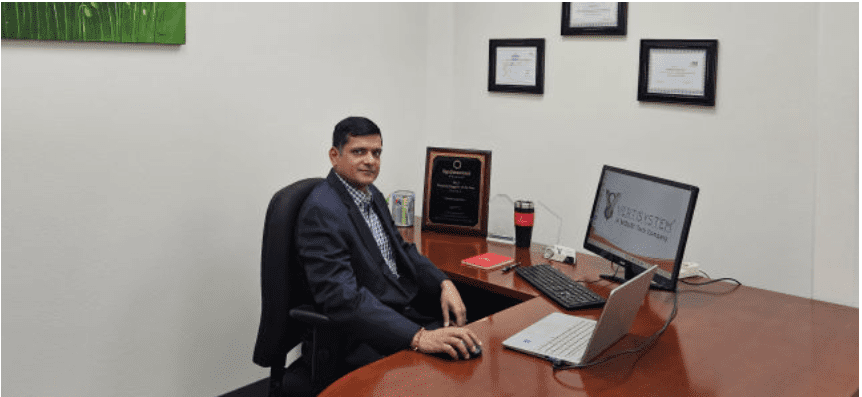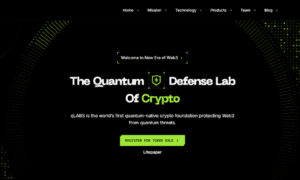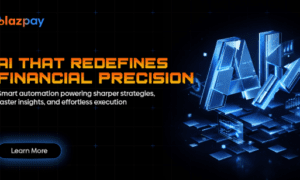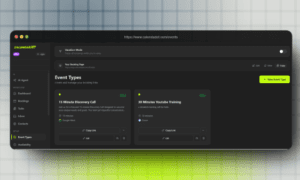In enterprise technology, one concept has moved from buzzword to boardroom metric: Outcome-Based Services (OBS). As cloud, AI and managed operations mature, companies are shifting from time-and-materials contracts to performance-linked engagements, where SLAs and KPIs are tied directly to measurable business outcomes. The model is reshaping how global enterprises buy, deliver and sustain technology at scale.
At the center of this transformation is Anurag Jindal, the Vice President and Technology Client Partner at Vertisystem, and a Globee Awards Leadership Judge recognized for advancing delivery governance standards. Over nearly two decades, Jindal has helped global enterprises turn accountability into advantage by building multi-million-dollar portfolios, orchestrating global delivery teams and proving that reliability, compliance and ROI can coexist in the same service model. Across programs, Jindal’s operating model blends engineering discipline with business governance. The playbook is consistent: define outcomes up front, connect SLAs and KPIs to those outcomes and run a transparent cadence of daily, weekly and quarterly reviews that tie delivery directly to commercial value.
Cross-Border Payments: Reliability and Compliance at Scale
As enterprises apply outcome-based delivery to financial systems, the challenge becomes balancing speed, cost and trust in global transactions. European central bankers recently noted that one-third of retail cross-border payments in 2024 took more than one business day to settle, and costs exceeded 3% in nearly one-quarter of global corridors, clear headwinds for merchants and treasury teams that rely on predictable settlement and fees. Global watchdogs echoed the urgency: the 2024 KPI review found no use case meeting the 1% cost target for cross-border payments, and progress on costs and speed stalled versus 2023. Meanwhile, global remittance costs averaged 4.11% to send US$500 in Q4 2024, still above the UN target and keeping pressure on providers to engineer cost-down through process and platform modernization.
In that context, Jindal led a multi-year run-ops transformation for Western Union Business Solutions, integrating applications, infrastructure, testing and end-user computing under unified SLAs across more than 100 business-critical systems. The program delivered 32–34% efficiency improvement and over 30% run-the-business cost reduction within the first 12–24 months, embedding audit-ready controls across order initiation, treasury, compliance and reconciliation (FINTRAC and OFAC-aligned). “Cross-border reliability isn’t achieved through heroics; it’s engineered through governance,” Jindal says. “When SLAs and KPIs align with business outcomes, compliance and cost control become sustainable.”
Enterprise Software Estates: Resilience You Can Measure
Building on those gains in financial reliability, enterprises are now applying the same outcome-based frameworks to software estates where uptime and resilience define competitive advantage. At enterprise scale, resilience has become a board metric. In 2024, 54% of major IT outages cost more than $100,000, and 16% exceeded $1 million, showing that downtime directly affects financial performance. Modernization is accelerating: global cloud-infrastructure services spending reached $90.9 billion in Q1 2025, up 21% year over year as AI workloads drive migrations and refactoring. Yet budgets remain tight. Thirty-three percent of organizations now spend more than $12 million annually on public cloud, with budgets exceeding limits by 17%.
For VMware, Jindal led a fixed-price managed-services transition spanning L2 and L2.5 application and infrastructure operations. After a 14-week global transition under ITIL-aligned frameworks, his teams sustained 16 × 5 dedicated coverage with 24 × 7 on-call support, held response SLAs of 90% alongside resolution rates above 85% and generated 25–35% OPEX savings on a $5.43 million annual baseline. Disciplined change control and quarter-close “war rooms” minimized revenue risk. “Resilience is contrary to luck; it’s cadence,” Jindal notes. “When every incident, ticket and change window has an accountable SLA path, uptime becomes a byproduct of the process.”
Academic Medicine: Standardizing Complex, Regulated Workflows
These same reliability principles now underpin modernization in highly regulated environments where policy, compliance and data integrity are inseparable. OBS principles extend to regulated domains that demand auditability. The FY 2025 U.S. NIH budget request is $50.1 billion, reflecting the operational scale behind grants, clinical research and compliance. ClinicalTrials.gov now lists more than 530,000 registered studies, intensifying data-governance and reporting requirements across sponsors and sites. National exchange is also expanding: TEFCA has 9,780 organizations live and more than 50 million documents shared, raising the bar for reliable, standards-based operations.
At Stanford Medicine, Jindal served as a Technology Client Partner for a multi-year modernization covering NIH grants, donor endowments, faculty lifecycle, graduate financial aid, participant recruitment and clinical trials. His teams deployed secure, multi-tenant, GCP-hosted systems with configurable rules engines, dynamic UIs and event-driven integrations that cut cross-system data sync from more than 24 hours to about 4–6 hours. The initiative improved approval timeliness and enforced auditable controls aligned to NIH and institutional policy. He is also serving as a reviewer for the ICAT 2025. “When policy changes weekly, systems must adapt instantly,” Jindal says. “By encoding rules and surfacing them through dynamic interfaces, governance becomes living, not static.”
Global Workforce Platforms: Engineering Measurable Service Quality
As enterprises scale globally, outcome-based disciplines have become the backbone of how service quality, scalability and trust are maintained across time zones and teams. Around-the-clock operations now depend on disciplined managed-services models that deliver measurable consistency. In 2024, managed-services annual contract value reached a record $41.7 billion, reflecting growing demand for predictable, SLA-backed delivery. Macro tailwinds remain strong: global tech spend is projected to reach $4.9 trillion in 2025, a 5.6% increase as AI, software and services accelerate investment. Inside the enterprise, 49% of technology leaders report that AI is fully integrated into core business strategy, driving demand for AI-assisted monitoring, ticket analytics and real-time escalation.
For Prologis, Jindal designed and operated a 24 × 7 × 365 multilingual IT service desk spanning North America, Europe and Asia, supporting approximately 1,800 users and 2,700 monthly incidents. The program embedded quantitative governance with CSAT at 80% or higher, desk uptime of 99.9%, less than 5% abandoned calls and a 4% at-risk credit regime. All metrics were tracked in ServiceNow with daily, monthly and quarterly reviews that tied performance to commercial value and renewal momentum. “Great operations are engineered, not improvised,” Jindal says. “Design the cadence, metrics, languages, exceptions and excellence scales.”
Looking Ahead: Building the Infrastructure of Trust
With accountability now embedded across industries, outcome-based service models are emerging as the foundation of how AI-enabled enterprises will measure trust and value in the decade ahead. The next decade will see OBS become the default for AI-enabled enterprises. End-user spending on public cloud is forecast at $723 billion in 2025, a 21.5% year-over-year increase that underscores customers’ expectations for transparent alignment between SLAs, KPIs and financial outcomes. By 2030, cloud revenues are expected to exceed $2 trillion as generative AI expands the total addressable market.
Jindal continues to shape this dialogue as an invited reviewer for the IETACS 2025, helping define the next generation of accountable, AI-driven delivery frameworks that make enterprise technology measurable, governable and trusted. “Outcome-based delivery is contrary to a contract structure; it’s a culture,” he says. “When reliability and compliance are measurable, value compounds.”





























